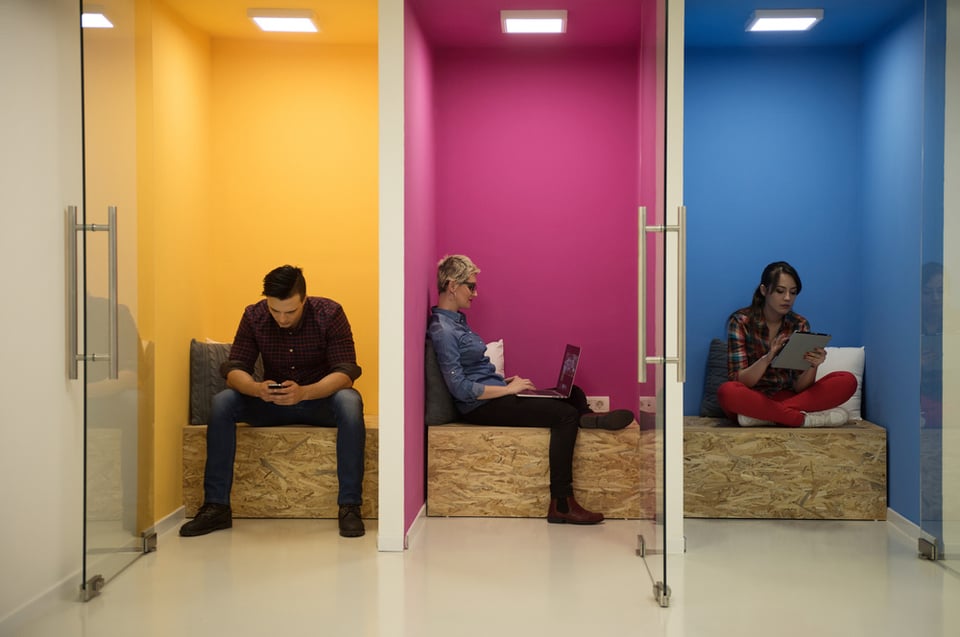←Back to resources A mere decade ago artificial intelligence (AI) was the stuff of science fiction....
How to spark creativity into your research
←Back to resources
Is the creative process completely different from the scientific process? In many ways, yes. But good research contends with the unknown, solves unsolved problems, and discovers new ones. And that sounds plenty creative.
Creativity, or the use of imagination to create something, should be a standard go-to-option in every researcher’s toolkit. Creativity in science can lead to original research questions and ideas, and useful and inventive combinations of existing facts, theories, and ideas. A spark of creativity can help researchers bypass roadblocks and synthesize facts and information, leading to new discoveries and better processes.

With algorithms and AI taking an increased role in the research process, capable of analyzing large and difficult-to-parse datasets, scientists have more opportunity than ever before to step back and think creatively. At the same time, an overwhelming amount of information and studies available as well as technology to use can bog researchers down in straightforward and repetitive tasks.
Here are six actionable ways to break free from that and spark creativity into your research:
1. Create a positive research culture
Doing creative research requires the confidence and support to take risks and make mistakes. Working in a healthy, communicative, and well-structured environment instills the informality and adventurousness necessary to think creatively on a daily basis.
In your workspace, try to make sure deadlines and objectives are clearly communicated to provide structure. Aim for an environment where no ideas are bad ideas to encourage brainstorming. And seek a democratic lab that prioritizes quality over quantity to inspire creative problem solving. You can learn more about creating a positive research culture here.
2. Set aside structured creative timeTime and space to think and play with ideas is vital for creativity. Try building some time and space for free, creative exploration into your schedule. It doesn’t need to be long, just twenty minutes a day or one or two hours a week.
Once you’re in your creative space, feel free to play and pretend. Explore bold, unrealistic ideas, think about the future, shift gears by playing with a puzzle or sketching, or just let your mind wander freely. Famously, Dmitri Mendeleev took a nap at his desk in 1869, and dreamed about “a table where all the elements fell into place.” And thus the Periodic Table was born.
3. Interact with other peopleThis step has been made a temporary challenge by the coronavirus, but highly communicative workspaces can be more creative. Simply talking to other people contributes to step one—creating a positive research culture—and also offers informal space to talk about ideas and answers. Nowadays, don’t be tentative about using chat features on Slack or Google Hangouts to randomly talk things through with colleagues. It also gives your brain the necessary space to step back from the problems at hand, and the opportunity to kindle new ideas.
4. Get away from the desk and out of the officeOne core difference between the creative process and the research process is that the creative process has an extra key step: the incubation period, where you leave your desk to explore. This exploratory activity helps your brain process and develop your idea while offering you fresh inspiration and clues for how to fit the pieces together.

Try reading a book, putting together a puzzle, visiting an art gallery, or walking in nature. Go to poetry readings, explore fascinating architecture, and listen to great music. All of these art forms probe our brains into new modes of thinking that can lead to out-of-the-box problem solving.
5. Ask questions and spitball ideasThere are countless examples in entrepreneurship where great business ideas were born after the founder switched to a new angle or asked a new question. Famously, the founder of Instagram originally wanted to create a location-sharing app, but instead asked how he could create a simple photo-sharing app instead. You can try writing multiple variations of the same question and freely generate lots of ideas, even impractical or bad ones. There’s a chance that one of your new questions or ideas could be better than the original, and even if it’s not, at least you got your brain moving in new directions.
6. Let serendipity guide you at a research databaseGo to your favorite research database and search on any topic that might interest you. By just playing around with a comprehensive tool, you might be surprised to discover something intriguing. Search new terms on peer-reviewed research databases and use filters to narrow down your results in any direction that interests you. Let yourself be guided by the research rather than any particular objective, and follow where your interests take you.
Sir Isaac Newton discovered gravity through serendipity, which is “an unplanned fortunate discovery.” If Roentgen can discover X-rays that way, there’s no telling what you might turn up. We especially recommend using an AI-powered database, such as our BUTTER, for this process—it will allow for faster scanning of interesting studies and offer helpful filtering tools.

.jpg?width=50&name=DSC_0028%20(1).jpg)


%2c%20for%20decoration%20and%20backgrounds%20with%20motifs%20of%20variety%2c%20exuberance%2c%20compatibility.jpeg?height=200&name=Floral%20celebration%20of%20spring%20Profusion%20of%20tulips%2c%20with%20raindrops%2c%20in%20full%20bloom%2c%20early%20May%20(foreground%20focus)%2c%20for%20decoration%20and%20backgrounds%20with%20motifs%20of%20variety%2c%20exuberance%2c%20compatibility.jpeg)